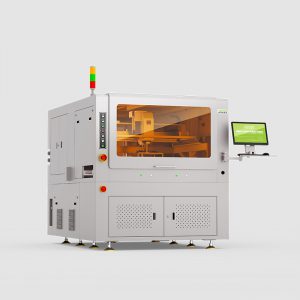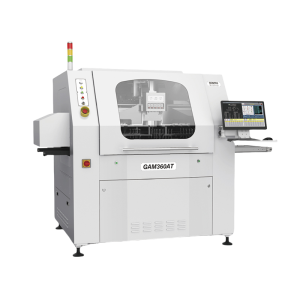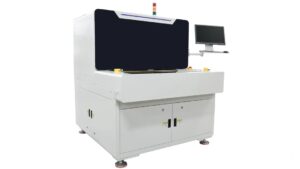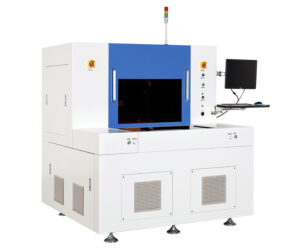Understanding the Role and Design Requirements of Depaneling Machines in PCBA Processing。
A PCB depaneling machine (also known as a PCB router machine) is essential equipment for separating interconnected PCBA panels. It is a critical piece of hardware for electronics manufacturers. Unlike manual methods or using cutters, which risk component damage or displacement, a PCB router machine employs precise blade movement to cut the boards. This significantly reduces stress during separation, ensuring higher quality and protecting sensitive components and solder joints. Let’s explore the key aspects of automated depaneling machines.

Key Features of PCB Depaneling Machines
1. Stable Operation: Prevents damage to tin traces, component solder joints, and electrical circuits caused by improper bending forces.
2. Specialized Blade Design: Ensures a smooth, clean cut surface on the PCB.
3. Touch-Screen Cutting Depth Adjustment: 5-stage programmable settings enable quick changeovers for different PCB thicknesses.
4. High-Frequency Eye-Protection Lighting: Enhances operator visibility and comfort.
5. Enhanced Safety Features: Includes safety mechanisms like light curtains and emergency stop buttons to prevent operator injury.
6. Simple Cut Distance Adjustment: Easy-to-use touch controls for setting precise separation dimensions.
7. Blade Pressure Adjustment: Eccentric cam mechanism allows fine-tuning of the upper/lower blade gap (0-2mm).
8. Dual-Sided Board Support: Securely holds double-sided PCBs during the routing process.
9. Vertical Backstop Design: Ensures the PCB remains perpendicular to the blades for increased accuracy.
10. Comprehensive Safety: Features include blade guards, safety light sensors, and emergency stop switches.
Applications of PCB Depaneling Machines
PCB router machines are primarily used in PCBA factories to separate individual boards after the soldering process is complete, typically before final testing. While SMT assembly lines often ship entire panels to customers, smaller PCBA manufacturers sometimes resort to manual separation – a method prone to damaging boards. Using a dedicated pcb router machine is the reliable and recommended approach to ensure board integrity.
Three Key Design Requirements for PCBA Depaneling
Depaneling machines, especially router-based depaneling systems, must accommodate various PCBA layouts:
1. Single-Side Mixed Assembly (SMT/THT): Components (SMT and/or through-hole) are placed on only one side of the board.
2. Double-Side SMT Assembly: Surface-mount components are placed on both sides of the board.
3. Double-Side Mixed Assembly:
Side A: Contains a mix of SMT and through-hole components.
Side B: Contains only SMT components suitable for wave soldering (if applicable). The pcb router machine must handle the mechanical separation without disturbing components on either side.





